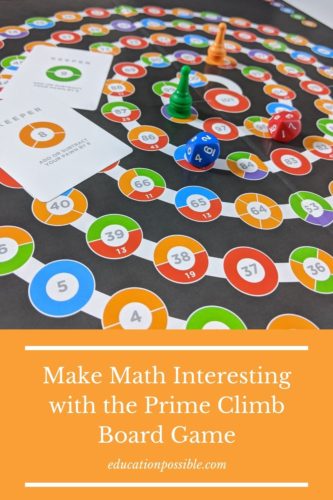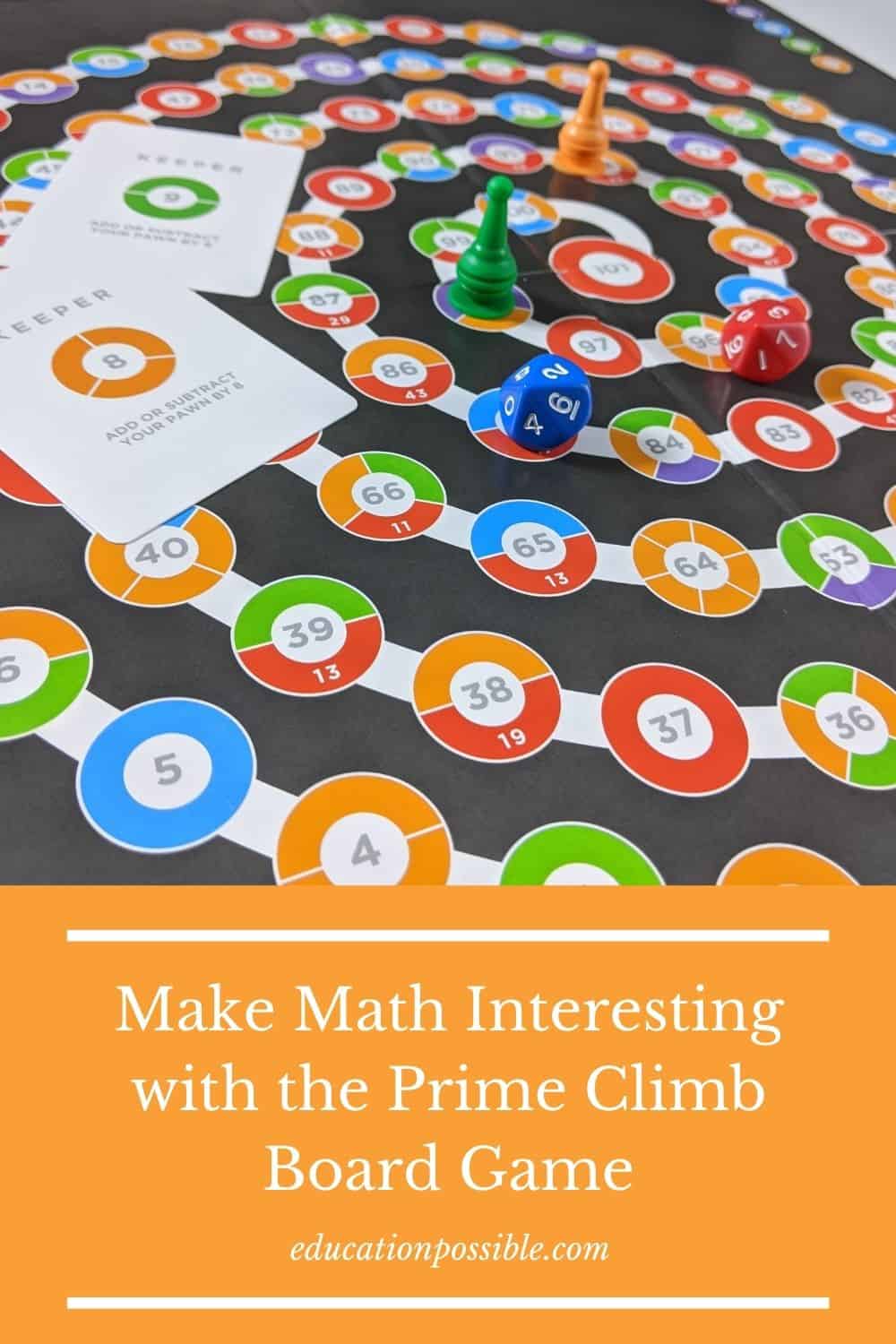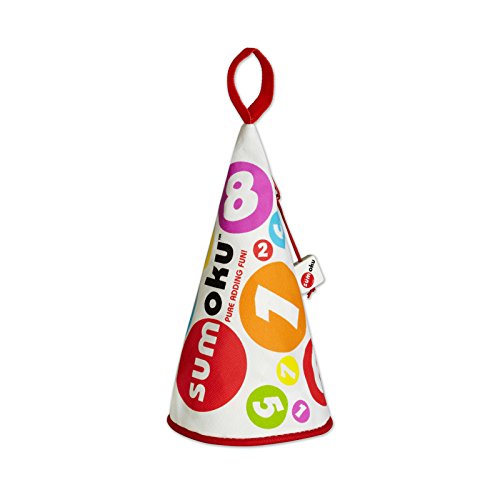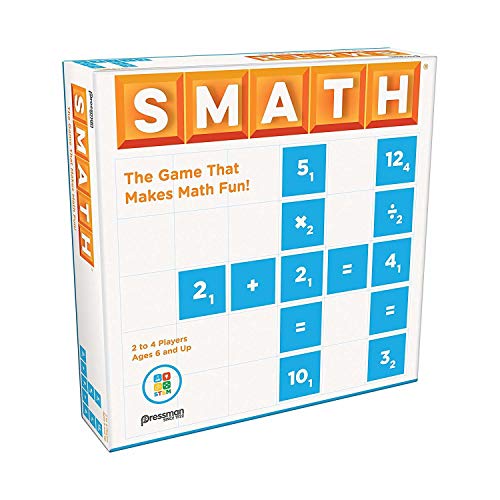Make Math Interesting with the Prime Climb Board Game
The Prime Climb board game is one of those unique games. It’s extremely educational, while also being a lot of fun to play.
It’s one of our go-to math games for middle school in our homeschool. If you’re looking for a way to make your lessons more interactive and engaging for tweens, adding some board games into your day is a great place to start.
Games allow older kids to look at material in a new light and work on rote review without getting bored.
So instead of pulling out another math worksheet, set up a math game, like Prime Climb instead.
Using Board Games for Math Review
In order for kids to master math, they need to do a lot of review.
While tweens have moved on to higher-level math, it’s important that they keep practicing the basics, to continue working on their mental math skills. The ability to multiply and divide numbers quickly will come in handy when it’s time for algebra.
Unfortunately, this takes consistent practice and can often become extremely boring for kids. As they begin working on harder math topics, the last thing they want to do is add review problems to their day, especially if it means more worksheets.
That’s why we use things like math projects for middle school and quick math games in our homeschool. I encourage you to add some to yours. When kids are playing a game or working on an activity, the review becomes fun.
Links in this post may be affiliate links.
Prime Climb Board Game
Prime Climb offers students the rare opportunity to understand how prime numbers are a key factor in multiplication while letting them be creative with math.
The goal of the game is to get two pawns to the 101 space at the center of the board using a variety of math operations. Players can use any combination of addition, subtraction, multiplication, or division to move along the path toward the center.
Prime Climb comes with a colorful game board, 8 pawns, 2 10-sided dice, and 24 prime cards.
While it sounds simple, the sheer number of choices available and the strategy involved make this game challenging for tweens. It will definitely keep them engaged while giving them the chance to work on important mental math skills.
How to Play Prime Climb Board Game
On the game board is a spiral shape, with numbers from 0 to 101. Players begin by placing both of their pawns on the 0 space. After rolling to see who begins, the first player will roll both of the dice and decide how to use the numbers to move her pawns.
During a turn, to move a pawn, players need to add, subtract, multiply, or divide the number their pawn is on by the number on the die. For example, if your pawns are at the start, on 0, and you roll a 4 and a 6, you would add 4+0 and 6+0 and move your pawns to spaces 4 and 6.
You cannot have your pawn sit on a number that isn’t on the board, so for your first move, the only math option available is addition. Future turns get more interesting because you’ll have more choices.
For example, let’s say you roll a 2 and a 4 and your pawns are on 10 and 50. You could multiply the pawn on 10 by 2 and then 4 to move to space 80. Or subtract the pawn on 50 by 4 and multiply it by 2 to move it all the way to 92.
There are several options you can take, and it’s up to you to decide whether to apply the numbers on the dice to both pawns or just one.
At the end of a move, if your pawn ends up on the same space as another pawn, you bump that marker to zero, even if it’s your own.
Let’s say you have a pawn sitting on space 60 and you roll a 4. You notice that another player’s pawn is on 5, so perhaps you make the strategic move to divide your pawn by 4 in order to move it back to 15 to bump that player back to zero.
If players move to a solid red space during their turn, they take a prime card which contains both action cards and keeper cards. While the overall strategy is to get to 101, players may want to make certain moves to land on red spaces in order to get these special cards.
Action Cards
- These cards have steps players must take as soon as they choose the card.
- They contain actions like roll again and revert back to the pawn nearest you and send them back to start.
- If you end up on an occupied space, you’ll bump that pawn back to start.
Keeper Cards
- These are cards that once chosen, you’ll keep face up on the table to use during a future turn.
- They contain things like add or subtract your pawn by 6 and send all pawns within two spaces of you back to start.
- You can play your keeper cards during any future turn.
The game board and dice are color coordinated, allowing students to check their math quickly as they move their pawns.
Once a player gets both pawns onto the 101 space using exact math or a keeper card, they win the game and play ends.
If you need additional help with gameplay, you may find these tools helpful.
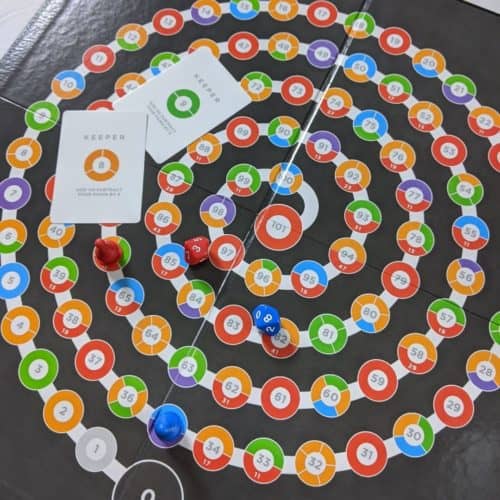
Things to Keep in Mind When Playing Prime Climb
- You must use all rolls each turn except for the last one.
- When you roll doubles, use the number rolled four times.
- Pawns can’t land on a space that doesn’t exist. That means no negative numbers or anything greater than 101.
Game Variations You Can Make
- For additional learning opportunities, brainstorm your moves out loud and ask your kids what they think. That will give them the chance to give their opinions and work through additional math problems.
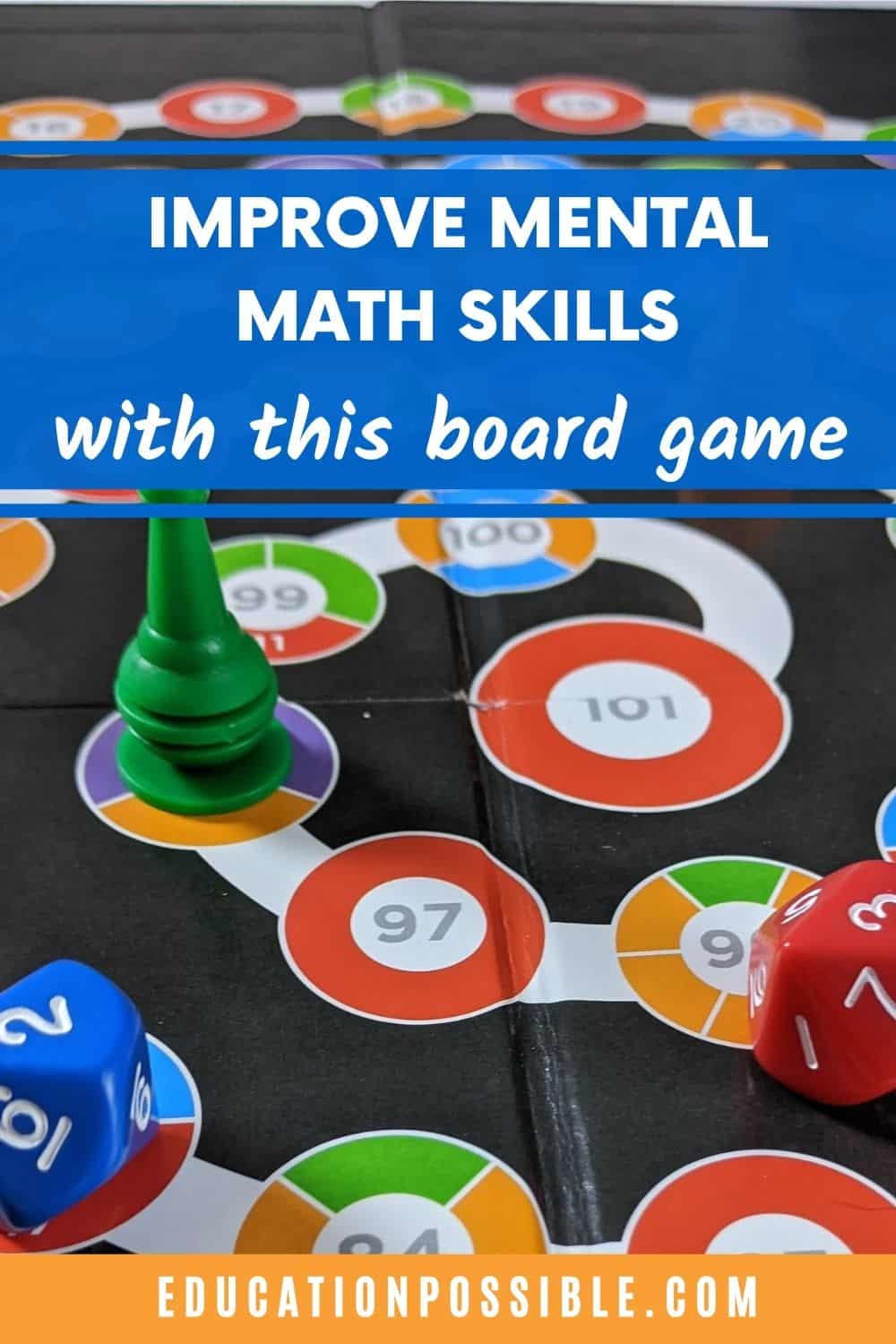
Using This Math Board Game in Your Homeschool
Prime Climb board game is a fun way to work on math in a non-threatening, engaging manner. Kids won’t consider it math work, they’ll just think they’re trying to win a game.
But make no mistake, there’s plenty of math going on. Every turn kids face math-related choices. They’ll be working on their operations and exploring prime numbers.
As I mentioned, instead of always looking at math in the same straightforward method, it gives players an alternative way to see and understand numbers.
While it may seem like the obvious choice to keep multiplying to move forward faster, it’s not that simple. There’s actually quite a bit of strategy involved in the game on top of the math.
Hopefully, your tween will also realize the math involved in the board’s coloring. For example, all orange numbers are even and numbers that are multiples of 5 have blue within the circle.
The colors not only help players check their math, but they show a number’s prime factorization. It’s known as the Fundamental Theorem of Arithmetic or the concept that you can write numbers as products of prime numbers – writing 20 as 5 x 2 x 2. This is an amazing skill for tweens to build.
This game can’t take the place of your math curriculum, but it makes an excellent companion. By playing Prime Climb regularly, you’ll see a vast improvement in your tween’s mental math skills, which will definitely help him with whatever math topic he’s currently studying.
I would recommend either making this game a part of your math lesson or playing it on a day when your tween has less formal work to do.
And to be honest, it’s so much fun, you could easily add it to a family game night. It’s actually a great board game for teenagers.
Are you ready to see math in a whole new light?
Additional Math Game Resources for Tweens
- Fun math games with dice to play with tweens.
- Here are some of the best math board games for middle schoolers.
- Number Rings is an excellent game for working on math drills.
- This printable math game will give your older kids practice with their double digit multiplication facts. Sure, most tweens can easily do this on paper, but can they do it quickly in their heads?
- Fun Pi Day ideas for math lovers.
- Practice math by building equations while playing Equate.
- Improve mental math skills by playing Math Dice Chase.
Must-Have Board Games for Math Skills
- Sumoku is a fun crossword-style math game that includes several game variations.
- Players try to earn the most points by building the best math equations in Smath.
- Proof! Math Game is a fast-paced card game that will help tweens build their mental math skills.
